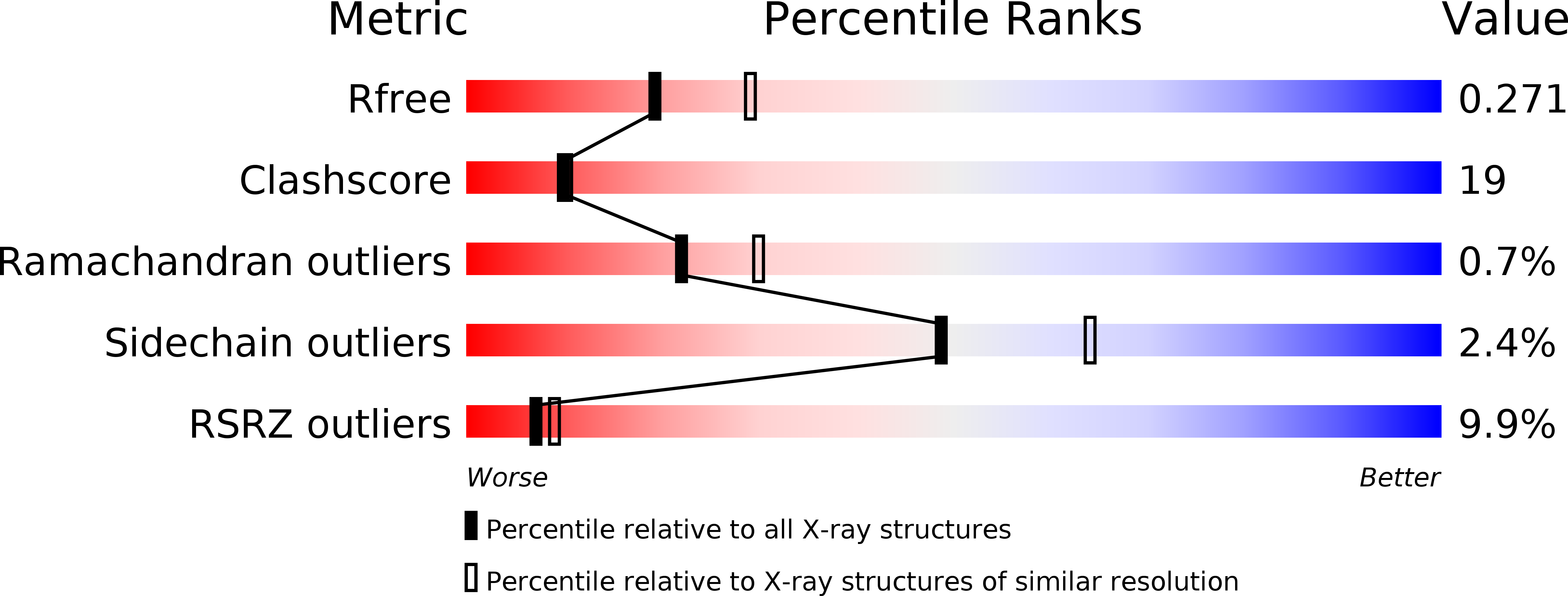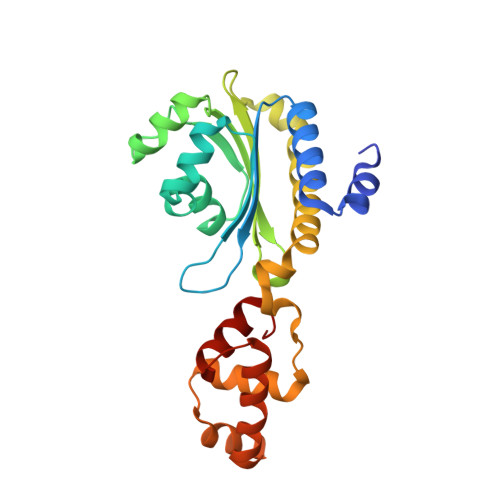Crystal structure of QscR, a Pseudomonas aeruginosa quorum sensing signal receptor.
Lintz, M.J., Oinuma, K., Wysoczynski, C.L., Greenberg, E.P., Churchill, M.E.(2011) Proc Natl Acad Sci U S A 108: 15763-15768
- PubMed: 21911405
- DOI: https://doi.org/10.1073/pnas.1112398108
- Primary Citation of Related Structures:
3SZT - PubMed Abstract:
Acyl-homoserine lactone (AHL) quorum sensing controls gene expression in hundreds of Proteobacteria including a number of plant and animal pathogens. Generally, the AHL receptors are members of a family of related transcription factors, and although they have been targets for development of antivirulence therapeutics there is very little structural information about this class of bacterial receptors. We have determined the structure of the transcription factor, QscR, bound to N-3-oxo-dodecanoyl-homoserine lactone from the opportunistic human pathogen Pseudomonas aeruginosa at a resolution of 2.55??. The ligand-bound QscR is a dimer with a unique symmetric "cross-subunit" arrangement containing multiple dimerization interfaces involving both domains of each subunit. The QscR dimer appears poised to bind DNA. Predictions about signal binding and dimerization contacts were supported by studies of mutant QscR proteins in vivo. The acyl chain of the AHL is in close proximity to the dimerization interfaces. Our data are consistent with an allosteric mechanism of signal transmission in the regulation of DNA binding and thus virulence gene expression.
Organizational Affiliation:
Department of Pharmacology, Structural Biology and Biophysics Program, University of Colorado Denver School of Medicine, Aurora, CO 80045, USA.
















